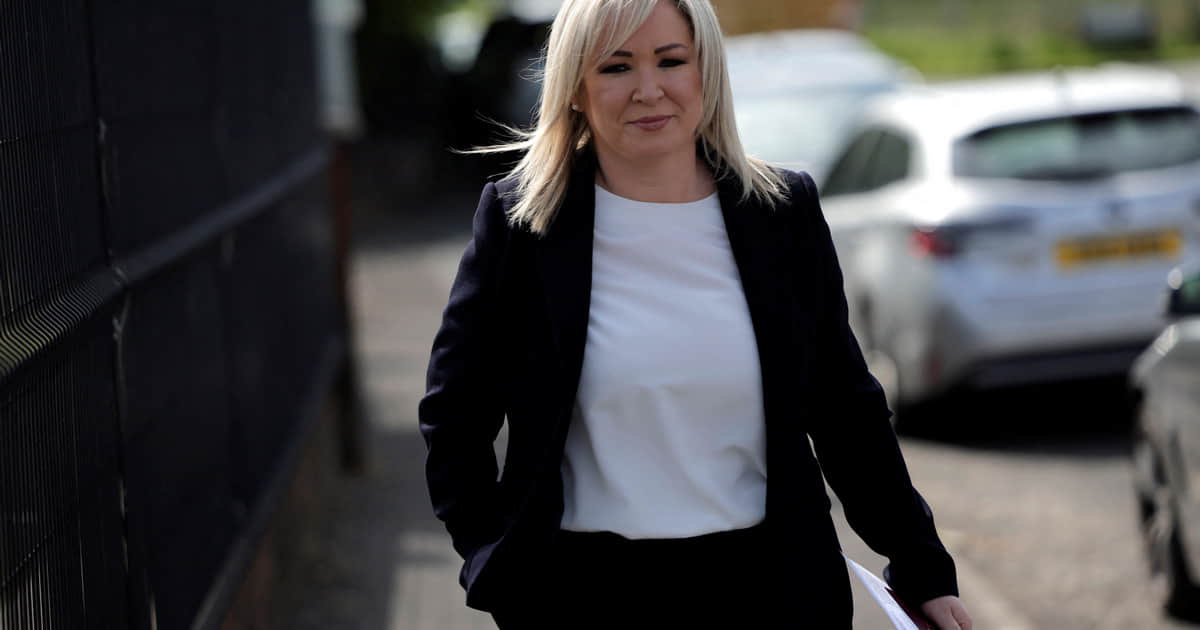Why Northern Ireland is closer to leaving UK

Northern Ireland, a country within the United Kingdom of Great Britain and Northern Ireland, has finally sworn a new government, ending a two-year political crisis and likely entering into a new one. For the first time since its existence (since 1921) its first minister comes from the nationalist party Sinn Fein, whose ultimate goal is the reunification of the island of Ireland under one state. The leader of this party, Michelle O'Neill, has openly stated that she considers a referendum on joining the Republic of Ireland within the decade realistic.
Read more in the article by Oleh Pavliuk, a journalist of European Pravda - One island - one country: Northern Ireland takes first step towards leaving the UK. On Saturday, 3 February, exactly two years since the start of the political crisis, it ended with the appointment of a new first minister for Northern Ireland. The United Kingdom's exit from the European Union has posed a problem for Northern Ireland.
It borders the Republic of Ireland, am EU member. Previously, there was virtually no border between the two states. Unlike unionists, Republicans in Northern Ireland insisted on continued membership in the single market and customs union with the EU to avoid any theoretical obstacles when crossing the border with Ireland.
London and Brussels seemingly agreed to a compromise outlined in a separate agreement - the Northern Ireland Protocol. Time passed, negotiations between the EU and the UK continued on changing the protocol, compromise mechanisms never appeared, and unionists became increasingly outraged by the situation. In February 2022, the first minister of Northern Ireland from the Democratic Unionist Party (DUP), Paul Givan, resigned.
It was an attempt by the unionists to pressure London to insist on better trading terms through the "internal border" in negotiations with the EU. And without the DUP's agreement, the government of Northern Ireland couldn't function. As a result, for the next two years, the country lived in a political crisis: there was no government, the Assembly's work was paralysed by the DUP's actions, and money came only through direct subsidies from London.
Thus, the crisis ended with the appointment, for the first time in its 102-year existence, of a representative of nationalist republicans as the first minister - Michelle O'Neill of Sinn Fein. An important nuance: the nationalist views of Sinn Fein are primarily about the reunification of the island of Ireland within one state, rather than, for example, policies on migrants or the economy. The current status of Northern Ireland is regulated by the Good Friday Agreement of 1998, which explicitly provides for the possibility of a referendum on changing the country's status if there is evidence of changing social attitudes (although the agreement does not specify the criteria for determining "changing social attitudes").
A reasonable question arises: aren't such changes evidenced by opinion polls showing a predominance of reunification supporters? Or the victory of parties advocating this course and the election of their representative as the first minister? So the scenario of "Ireland's reunification" no longer seems so unattainable.
We cannot forget about another option that could simultaneously address the claims of both unionists and republicans -- the return of the United Kingdom to the EU. After all, most Britons already view the very idea of Brexit sceptically. But as long as the return of the UK to the EU is less than unlikely on the political level, Northern Ireland, the inadvertent hostage of Brexit, will continue to seek ways to avoid political crisis.
If you notice an error, select the required text and press Ctrl + Enter to report it to the editors.